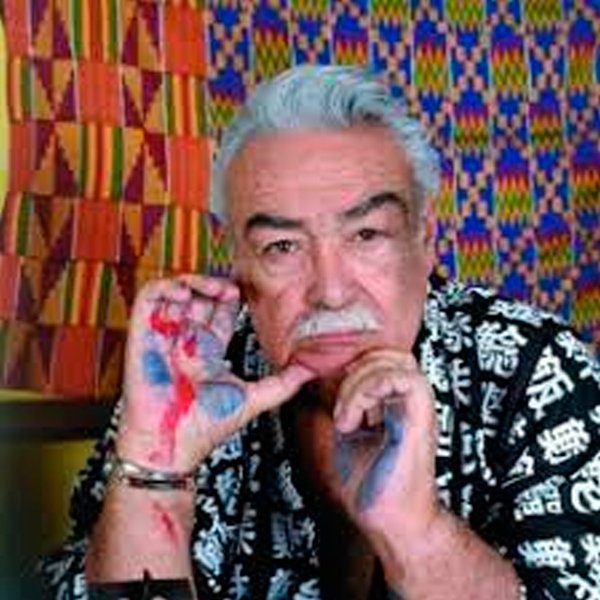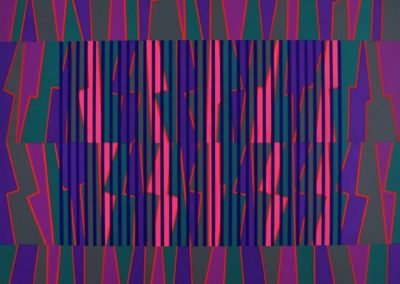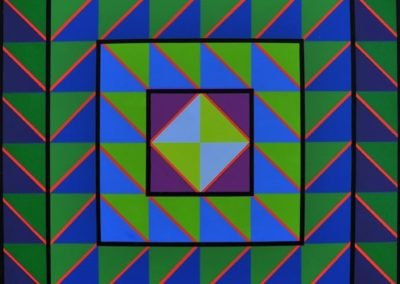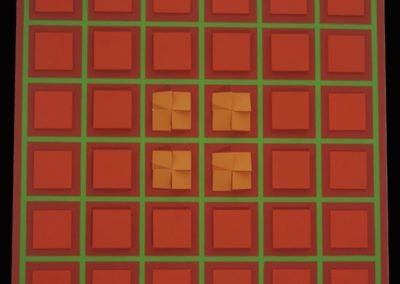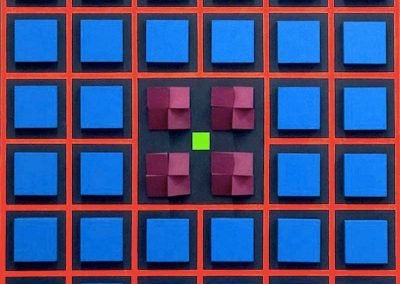Víctor Valera was born in Maracaibo in 1927.
Working mainly as a painter and sculptor, Victor Valera’s oeuvre stands out as one of the pivotal figures in Venezuela’s art scene.
His murals and works integrated into architecture are testimonies to the trans-disciplinary practice. His interests focused chiefly on the relationships between color and volume, expansion and contraction, and the problems of figures in planes.
His use of color stimulates the possibility of doubt in the viewer who perceives two-dimensionally but enters a construction of spatial challenges. Working mostly with repetition of geometric shapes and lines, he seemed to ponder the basic studies of negative and positive space, the relationship between figure and background, and the studies of color.
Valera studied at the Escuela de Bellas Artes in Maracaibo and moved to Caracas in 1945, where he pursued Applied Arts, until 1950 when he returned to native Maracaibo to study with Jesús Soto.
Like many of the artists of his generation, he moved to Paris in 1952 to work as an apprentice to Victor Vasarely and Ferdinand Léger. His first solo exhibition was held in 1953 at Galerie Arnauld in Paris.
Valera returned to Venezuela in 1956 and was invited to collaborate on Carlos Raúl Villanueva’s architectural and artistic project of Caracas’ University City, for which Valera designed outstanding mosaic murals. He has been exhibited widely in Venezuela, Colombia and the USA.
His principal exhibitions include a solo show at Biblioteca Luis Ángel Arango del Banco de la República de Bogotá, Colombia, 1974; Homenaje a los cantantes populares at Galería de Arte Nacional, Venezuela, 1982; Formas para tocar at Museo de Arte Contemporáneo de Caracas, 1992 and El muro como soporte at Museo Alejandro Otero, 1999.
Has been included in important group exhibitions such as Versiones del Sur, cinco propuestas en torno al Arte en América – Heterotopías, medio siglo sin lugar, 2001 and Los Cinéticos, 2006 both at Museo Nacional Centro de Arte Reina Sofía, Madrid.
Valera won numerous awards, including the first prize for the Bienal de Escultura Francisco Narváez, at the Museo Francisco Narváez, Porlamar, Venezuela, several AICA awards as best artist of the year in 1984, 1985, 1986 and 2006.
